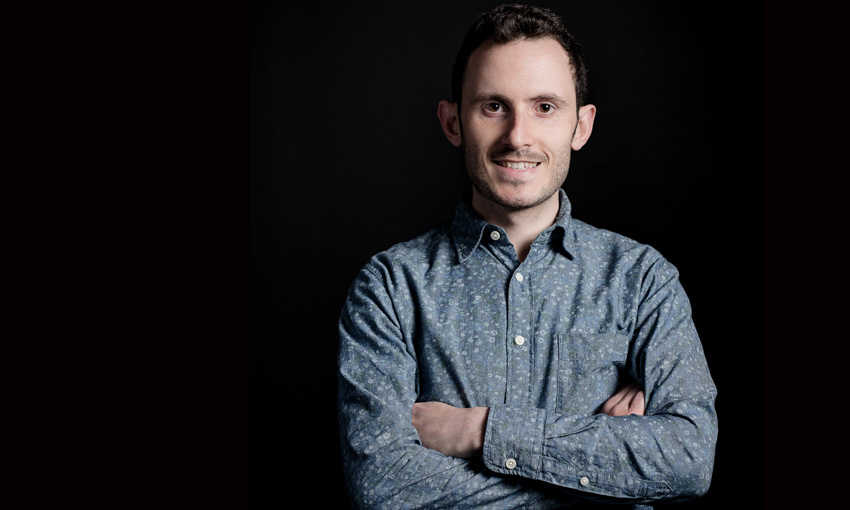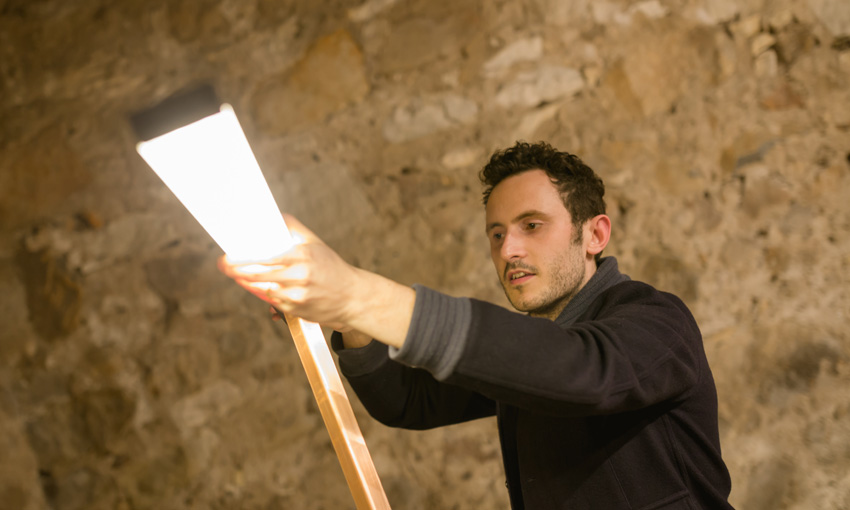Fresh from winning the Clarence Prize for Excellence in Furniture Design - one of the most sought after awards in the field - SA's Liam Mugavin tells us how he came to be making intriguing and engaging furniture everyday.
Career path: Liam Mugavin
Liam Mugavin’s furniture is one of those things that you might not think you are familiar with, but which you probably are.
We’ve seen and admired his Tangle coffee table – with its simple glass top and distinctive interlocking triangles that form the legs – many times, but never knew who was responsible for it. But with work attracting more attention and his clinching of the Clarence Prize – the much-coveted $20,000 award bestowed by the City of Clarence in Tasmania – ahead of other well known finalists including Jon Goulder, his name is bound to be heard more and more.
Follow Liam’s work and products through his website.
A young furniture designer, Liam recently completed the JamFactory’s associate program, where he was mentored for two years. But his interest in furniture design considerably predates his commencement at JamFactory in 2013.
Liam studied Industrial Design at UniSA between 2004 and 2008, and says what he learned in the course still has a strong influence on his practice.
“My methods are still very much informed by my industrial design education,” he says.
“I guess I differentiate by having a deeper understanding and appreciation of materials, processes and craftsmanship, which complements my design understanding. Living in Japan for four years probably has a lot to do with it.”
His time in Japan introduced Liam to a range of different ways of looking at design that helped him evolve his work into something unique. One of the most important to him is a concept called “Ma” that emphasises the ability for absence and void to be as significant as inclusions in a design.
“I want my designs to shout out, yet remain understated. On first sight my designs often create reactions of intrigue and surprise, which is great, but I want to develop emotional connections that extend beyond first impressions. So there’s always more to discover beneath the simplicity,” says Liam.
The work that won the Clarence Prize is the Koto – a light made from Tasmanian oak that requires the user to manually engage the electrical connection by moving the lamp section of the construction up or down.
Liam wanted this physical act to serve as a reminder to people that they are consuming electricity every time they turn on a light. He has also built-in flexibility that allows the light to be faced up or down for different functions, and simple joinery has been employed to keep the piece streamlined and avoid the use of fasteners.
“Liam’s light is elegant, surprising and playful,” said Clarence Prize judge Laura McCusker. “It has been designed with economy of materials, distribution and functionality in mind. It is so beautifully made it’s hard to see how he’s done it. It’s totally delightful.”
The balance Liam struck between practicality and beauty in the design of the Koto is evident throughout his range of work, and is one of the things that is likely to help his career in furniture be sustainable.
Now working from a JamFactory studio as a tenant, not an associate, his commercial practice is growing in diverse directions.
“My work is conceptual, research based and explores varies themes, yet it fulfils functional design and production requirements,” he says.
“It’s hard to pigeon hole. Some of my furniture is produced under license agreements with manufacturers, some is produced in my studio for commercial wholesale, some is produced as limited editions and some is private commissions. I’ve also worked on numerous fit-outs with the Jam Factory and will be working on a café fit-out in Sydney later in the year.”
In an indirect way, Liam is carrying on a family tradition. His great grandfather was the founder of Hamra Furniture – a business that survived in Adelaide from 1927 until last year.
While Liam didn’t grow up amidst the sawdust of Hamra’s workshop – being that the business was passed down a different side of the family – he does seem to have an instinct for the craft that his family plied for three generations.






